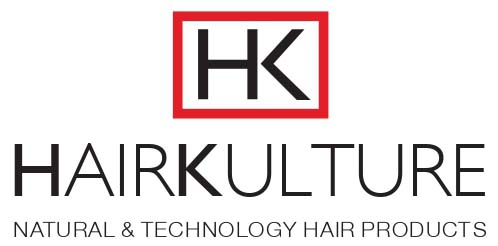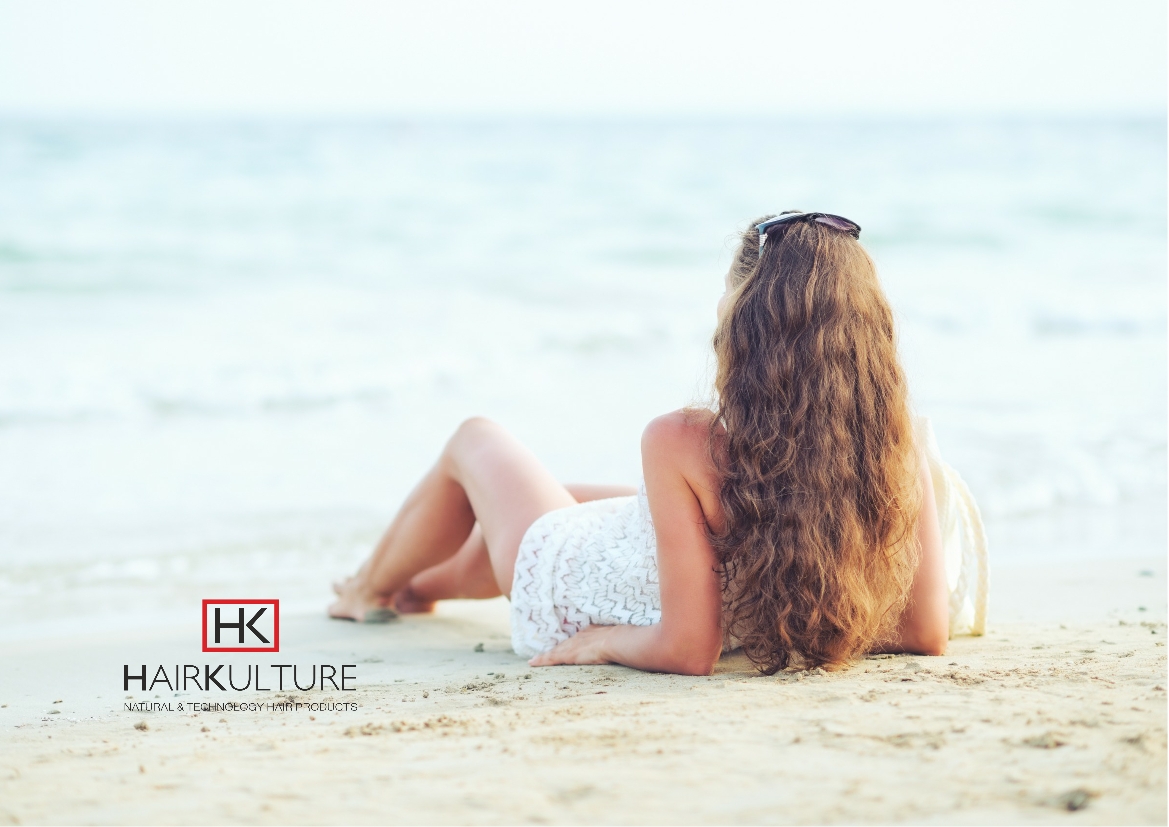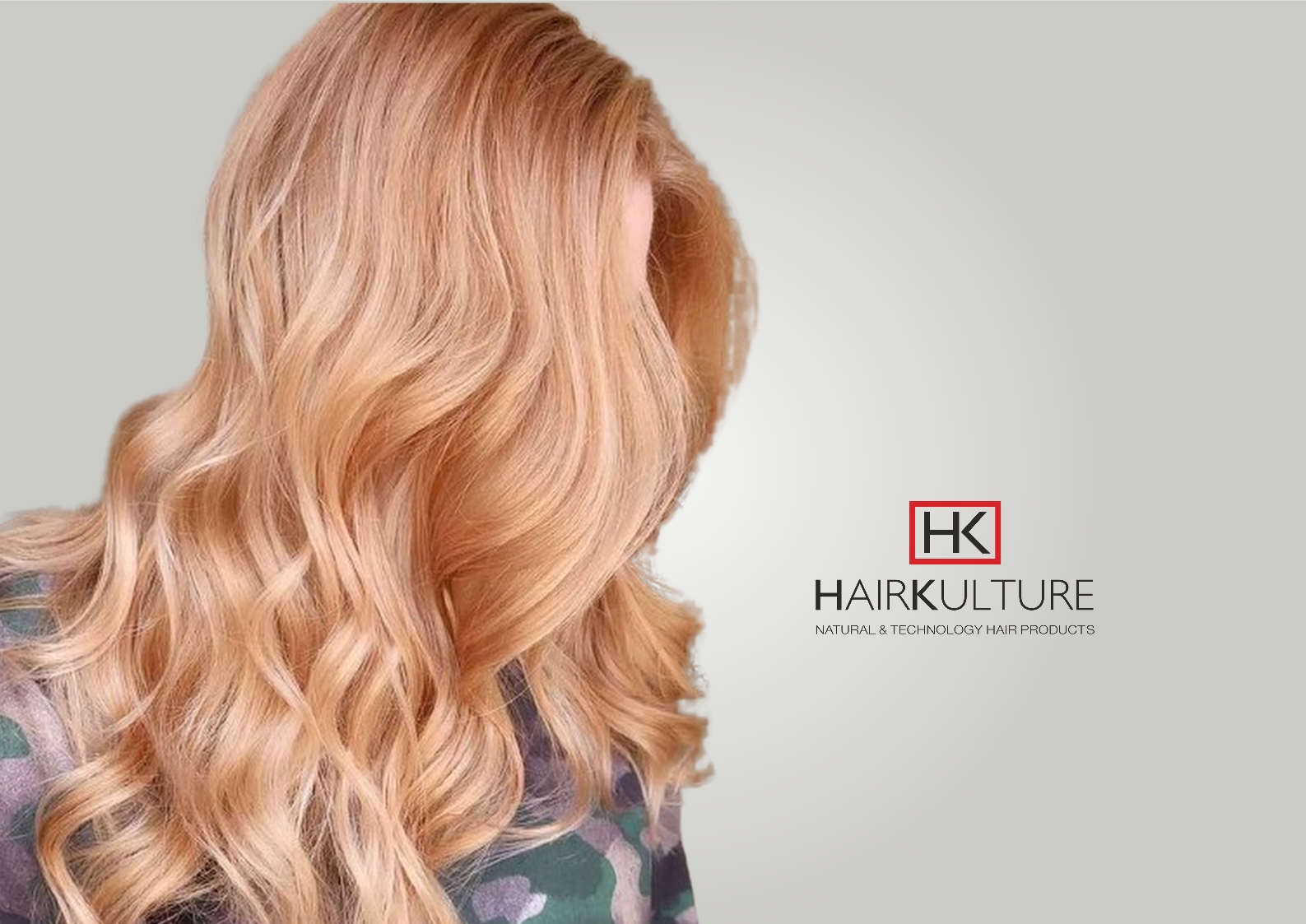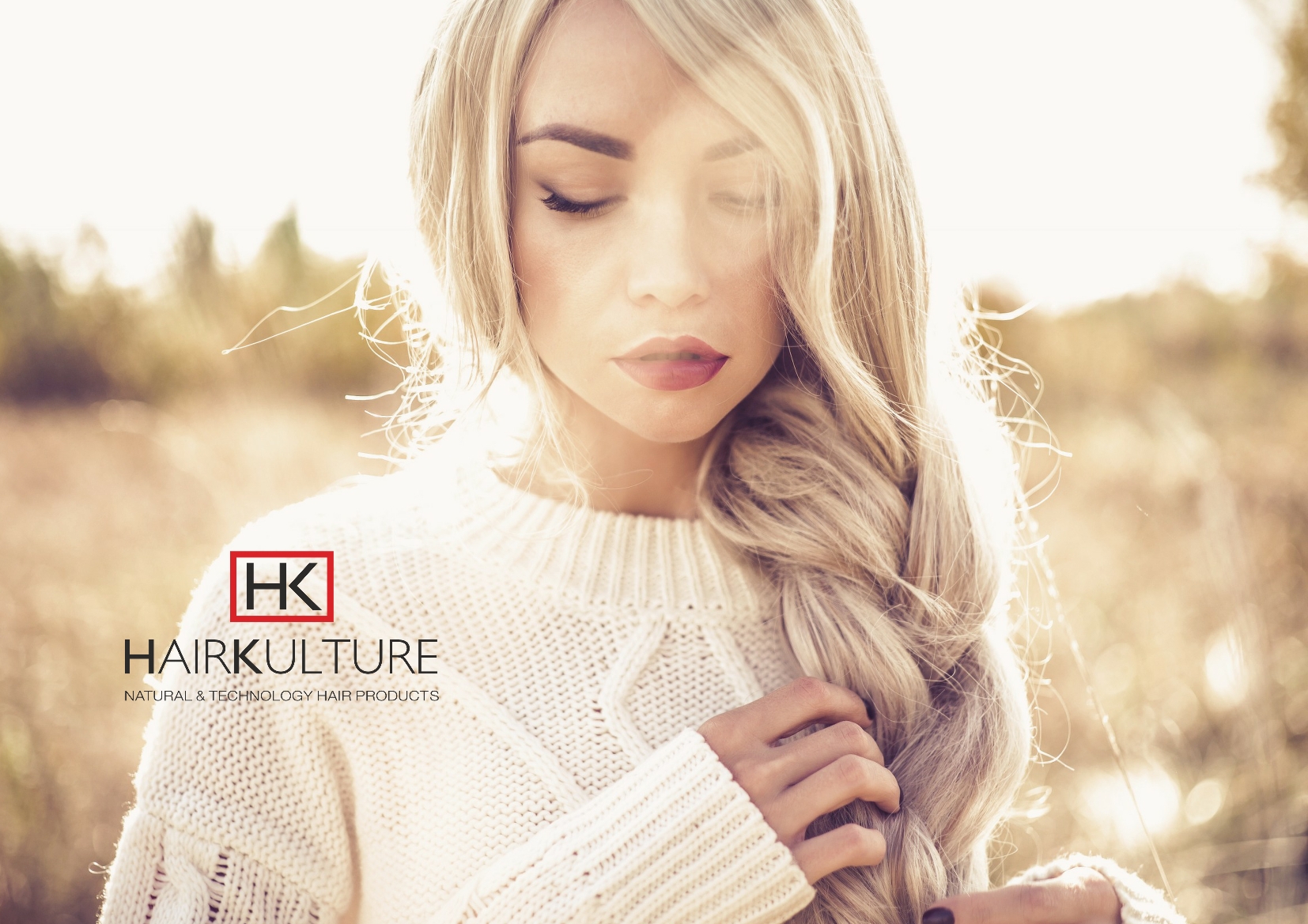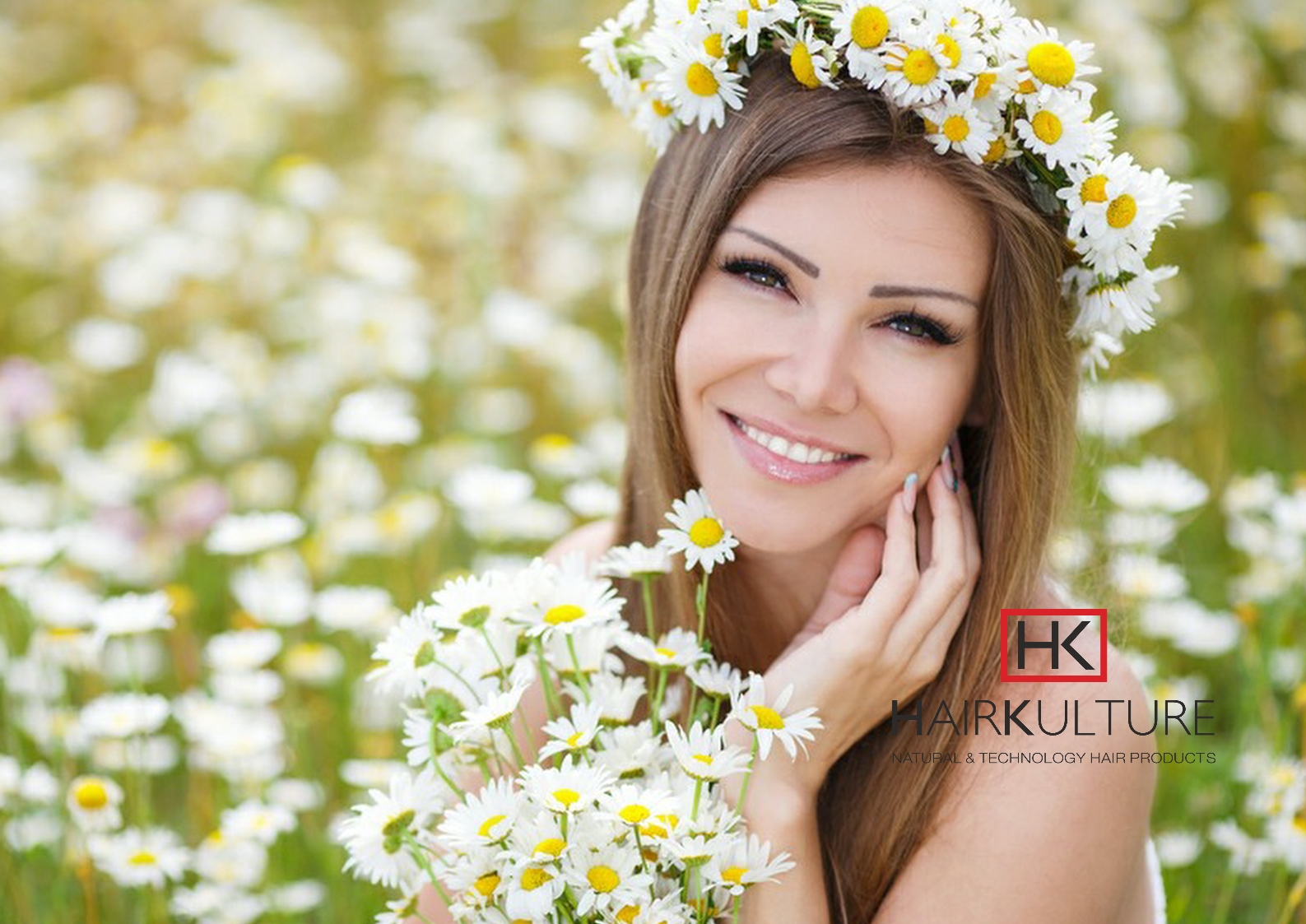A way to bring well-being to body and mind and regenerate ourselves from the stress that seasonal changes and everyday difficulties cause us.
Continue readingMalus Domestica stem cells against hair loss
We talk a lot about stem cells, but do we know exactly what they are? Let's learn more about them....
Stem cells are primitive cells, not yet specialized, from which all other cells that make up different organisms, both animal and plant, originate. They can generate cells identical to the original ones, thus remaining stem cells, or they can reproduce specialized cells for the performance of a particular function. They are widely used in the pharmacological field to fight various diseases such as cancers and leukemia, but also in the cosmetic field to ward off old age as much as possible.
There are two types of stem cells: human and plant.
In cosmetics, the latter are used because they possess properties that make them much more versatile and harmless than animal ones, the handling of which, on the other hand, is still very difficult.
The areas from which such cells are obtained depend on the type of plant being considered. Indeed, the extraction may involve the shoots, the roots, or even the fruit itself (especially red fruits); it is the individual researchers who, from time to time, must find the best part from which to extract the cells in question.
Types of plants subject to extraction include edelweiss, butterfly tree (Buddleja), blueberry, raspberry, and SWISS APPLE (Malus domestica).
The latter turns out to be not only the most famous but, by cause-effect relationship, the oldest. In fact, it was already known as far back as the 18th century for its exceptional storage capacity. In fact, thanks to its rich phytonutrient and protein content, it could last the entire winter season without rotting!
Malus domestica belongs to a rare Swiss variety called the Uttwiler Spätlauber, which is registered as a protected species because, in addition to its aforementioned remarkable preservation capabilities, it appears to be an endangered variety of apple tree, with only a few remaining in the world.
Even once differentiated, Malus domestica plant stem cells retain pluripotency and can therefore take on a variety of tasks. Due to the high concentration of tannic acid, a chemical found in plant extracts, they are able to interact with cells in the human body.
In this regard, by entering into symbiosis with dermal cells, they stimulate fibroblasts, thus activating the biochemical processes responsible for complete skin regeneration and the formation of collagen and elastin and promoting a visible and appreciable antiaging effect. Wrinkles are more relaxed, skin vitality markedly improved and, in general, aging slowed.
Last but obviously not least, active apple plant stem cells exert a marked regenerating and reactivating action on the hair follicle, stimulating hair regrowth and curbing hair loss. Indeed, they delay the physiological aging of hair follicles, which are a veritable reservoir of skin stem cells, and their subsequent programmed cell death.
Is it clear now why this little apple is so precious?
THE NATURAL DEFENSES OF THE SCALP
The natural defenses of the scalp and of the skin in general have the task of avoiding diseases and alterations of the deeper layers.
To preserve the health of our skin and hair, it is therefore essential to adopt those measures that guarantee their integrity and, in the event of alteration, take all measures aimed at restoring their original conditions.
Stratum corneum
It is the most superficial layer of the skin, formed by a dense network of >keratinized cells flattened and close together, forming a barrier that opposes the loss of liquids and the penetration of >bacteria.
The reduced humidity significantly limits the growth of an adverse bacterial flora, especially fungistic. The cells of the stratum corneum (corneocytes) renew every about 14 days and daily the skin flares in an invisible way, bringing with it the microbes that settle between the slits interposed between the gills.
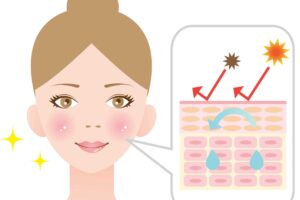
PROTECTIVE BACTERIAL FLORA (OR MICROBIOTA)
The scalp is normally populated by a large amount of microorganisms (bacteria and fungi in particular) that form the "flora bacterial protection" or "microbiota".
The microbiota coexists with our skin in a state of symbiosis that allows the correct balance and maintenance of the state of health of the skin itself and hair.
A change in the balance of the microbiota can lead to serious pathologies and promote the establishment of a pathogenic microbial flora.
HYDROLIPID FILM
The hydrolipidic film is a kind of multifunctional protective film present on the skin, consisting of a lipidic part and an aqueous mixture.
The hydrolipidic film insinuates itself between the corneocytes that form the stratum corneum of the skin, creating a fluid but stable structure, having a protective barrier function from bacterial and regulate the maintenance of cutaneous homeostasis. When the hydrolipidic film is damaged, the skin becomes sensitive to polluting factors, physical, chemical, mechanical and climatic stress and above all to the attack of harmful microorganisms, fungi, viruses and bacteria.
The hydrolipidic film consists of a mix of sebum, sweat, hydrophilic substances and lipids, mostly from the secretion of the sebaceous and sweat glands. More specifically, it consists of:
- 95% of fatty substances (<triglycerides, wax esters, squalene, ceramides and other lipids produced by the sebaceous glands; sphingolipids, fatty acids, cholesterol and other epidermal lipids produced by kranocytes). In children, since sebum begins to be produced only during puberty, the fat-soluble part is made up only of epidermal fats. These lipids are made up, even in adults, of fatty acids, among which we include the important linoleic acid essential for the epidermal barrier because, in case of deficiency, the stratum corneum becomes particularly dry and scaly.
- 5% of an aqueous part consisting of Natural Hydration Factor (NMF), a mixture of water, amino acids, lactic acid, sugars, polysaccharides and other hygroscopic substances (able to absorb humidity and retain water) and from sweat which, in turn, is a mixture of water, mineral salts, amino acids and lactic acid. Sweat also contains antibodies (IgA, IgG, IgE), immunoglobulins, which increase the defensive action against external aggressions.
THE FUNCTIONS OF THE HYDROLIPID FILM
The hydrolipidic film, besides acting as a protective barrier defending the skin from the external environment, from pathogenic microorganisms and from the free radicals, contributes to:
- Maintain skin hydration
- Maintain the skin pH at slightly acidic values (between 4.5 and 5.6) in order to make the environment inhospitable for harmful microorganisms
- Maintain skin elasticity
The hydrolipidic film in fact calibrates the surface hydration of the skin, hindering the dehydration of the skin thanks to the insulating action of its lipid component and also to the ability of the Natural Hydration Factor to retain water.
This thin layer also represents a communication route between the various layers of the skin and the external environment: keeping it healthy also means promoting the integrity and efficiency of the intracellular exchanges of the deeper layers of the skin.
ALTERATIONS OF THE HYDROLIPID FILM
The alterations of the hydrolipidic film determine skin dryness and promote its sensitization, generating an attitude to irritation and redness. The various substances that make up the Natural Hydration Factor stabilize in fact the pH of the skin in slightly acidic values.
When this value is altered, resulting either too acidic or too alkaline, the skin becomes more vulnerable to attacks by pathogenic microorganisms and therefore more subject to infections and hypersensitivity. In the long run, these alterations can generate scalp anomalies and jeopardize the activity of the bulb itself, compromising the regular development of the hair, to the point of shortening its life cycle, thus making it increasingly weaker and subject to premature hair loss.
There are various causes that can compromise the balance of the hydrolipidic film. We remember:
- Use of too aggressive detergents
- Exposure to UV rays and adverse environmental and climatic factors. In summer the worst enemy is represented by excessive heat that stimulates an overproduction of sweat and the sun rays that favor the formation of free radicals; in winter, on the contrary, it is cold.
- Professional environments with dusts or vapors.
- chemical treatments
- hormonal alterations
- Drugs
- Persistent stress condition
- Aging - with age slows down the renewal of cells that make up the stratum corneum, making it thinner and less able to repair itself in case of damage.
HOW TO RESTORE THE HYDROLIPIDIC FILM
The IKS trichological line, to rebalance the hydrolipidic film and restore tone and elasticity to the skin, offers its solution with products based on natural active ingredients, aimed at restoring the right level of acidity to the pH, to cleanse delicately without causing further irritation, to provide the right hydration and an adequate presence of lipids and other substances, restoring what, for some reason, it got altered.
Our professional method I.K.S. Innovation Kapelli System, for optimal use of the line, recommends to start with a good deep cleaning to remove slag and toxins. To avoid worsening the situation and aggravating redness and inflammation, it is however necessary to use products with intense, but not aggressive action.
THE PROFESSIONAL PEELING PROCESS
PEELING CREAM AF, is a creamy emulsion specific for cleaning the follicular ostium. With its natural ingredients (Sage Extract, Rosemary and Peppermint Essential Oil) it carries out a dermopurifying, refreshing, toning and normalizing action on the skin's functions. The presence of Panthenol, or Provitamin B5, helps retain moisture in the skin, promoting rehydration.
To strengthen its action, always respecting suffering skin, it can be mixed with the SKIN PURIFICANT, a mix of Essential Oils which performs a antiseptic action, capable of effectively combating harmful microorganisms present in skin with an altered hydrolipidic film. With White Thyme Essential Oil, Sage Extract, Rosemary Extract, Peppermint Essential Oil and Watercress Extract, it purifies, refreshes and tones the skin, as well as providing vitamins A, B1 , B2, Mineral salts, and UREA, one of the components of the Natural Hydration Factor.
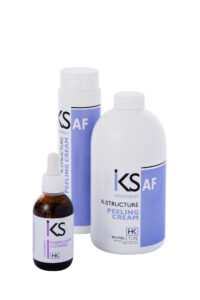
Once the deep cleaning has been carried out, it is necessary to remove further residues by washing the skin with an extremely delicate shampoo, which cleanses gently.
Cleansing
SHAMPOO BABY BY, with Wild Mallow, Calendula Extract and hydrolysed Wheat Proteins, hydrates, decongests, soothes, repairs irritated and sensitive scalp, giving immediate relief and comfort and leaving the elastic and toned skin. The presence of a balanced mixture of vegetal-extracted surfactants allows you to remove dirt and bacteria without attacking the skin, but rather helping it in the rebalancing action of the own pH.

Conditioner
After shampooing, you should continue to integrate water, lipids and other substances, essential for the health of skin and hair, with REPAIR CREAM RC, intensive restructuring cream.
Repair Cream RC contains Avocado Oil, composed of high percentages of fatty acids, phytosterols and vitamins, Aloe Barbadensis Extract, strongly hydrating, refreshing and softeningas well as bactericidal, Extract Glycolic from Ginkgo Biloba, rich in flavonoids and a powerful antioxidant and hydrolyzed soy and quaternized wheat proteins, with hydrating, softening and antistatic properties. Applied to the skin and hair, it helps to restore the missing substances necessary to restore their biological balance.
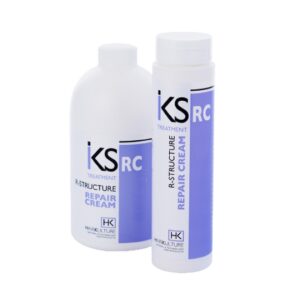
TO CONCLUSION
As a last operation, the I.K.S. method recommends mixing a few drops of Sensitive Essence with Mineral Acid and distribute the mixture so obtained on the skin, without rinsing.
Essence Sensitive is a mix of essential oils with a strong relaxing and antispasmodic, specific for tense, sensitive and itchy.
Based on Essential Oil of Lemon, Mandarin and Sweet and Bitter Orange, plays a toning and antiseptic, helping to reactivate the functionality of the microcirculation.

Mineral Acid, with Chamazulene, Red vine glycolic extract, blackberry glycolic extract, the trace elements magnesium and zinc, rice and wheat proteins, and the panthenol, integrates mineral salts, amino acids, vitamins, carrying out an important hydrating, restructuring and antistatic action and above all contributing to restore the right level of acidity to the scalp.

With these few operations you can return the biological balance to the scalp.
HOW TO KEEP THE HYDROLIPIDIC FILM HEALTHY
To prevent alterations and try to keep the hydrolipidic film healthy, it is essential to use suitable products that do not attack and deplete the skin of fundamental substances, limit invasive chemical treatments and, if the alteration is caused by anomalies such as dandruff and seborrhea, do not neglect them, but try to keep them under control with appropriate treatments.
A skin in order is in fact the fundamental basis to maintain as long as possible a full and healthy hair and prevent the shortening of the biological hair cycle, the main cause of early fall and progressive reduction of mass.
SUMMER: HOW TO PROTECT OUR HAIR
Summer: how to protect our hair?….yes because, if on the one hand we can't wait to benefit from hot sunny days, with refreshing baths at the sea or in the swimming pool, on the other hand we must also be prepared for the consequences that these factors determine the scalp and lengths. To better understand the damage that our hair can suffer from excessive exposure to sunlight and too frequent contact with salt and sea water, it will be appropriate to say a few words about their delicate structure.
STRUCTURE AND FUNCTION OF THE HAIR
Each hair is formed by two parts: the bulb or root and the stem.
- The bulb is not visible as it is found in the skin, inside the hair follicle, a particular structure of the skin whose deepest part reaches up to the dermis. At the base of the bulb there are the so-called hair matrix cells, which determine hair growth. At this level there is also the dermal papilla, a structure that contains blood vessels, lymphatic vessels and nervous structures, whose task is to provide nourishment and control to the cells of the hair matrix. The sebaceous glandand the erector pili muscle (or piloerector muscle) are connected to the hair follicle.
- The stem, or the visible part of the hair, is a "dead" structure made up of totally keratinized cells that have lost their nucleus and vital functions.
These cells contain high concentrations of a very resistant fibrous scleroprotein, keratin. The keratin present in hair and nails is much harder than that present in the skin, as it contains a very large quantity of cystine, a sulphur-rich amino acid. It is precisely between the different cystine molecules that disulfide bridges are formed, which give the hair great resistance. Disulfide bridges also called sulfur-sulfur are those that determine and maintain the shape of the hair. When the disulfide bonds break, the cystine molecules separate and the hair becomes brittle.
Other components of hair are:
- water
- Lipids (triglycerides, waxes, phospholipids, etc.
- Minerals (magnesium, zinc, iron, copper etc.
- Pigments responsible for colouring.
By cutting a hair horizontally, you can appreciate its structure, subdivided into three parts: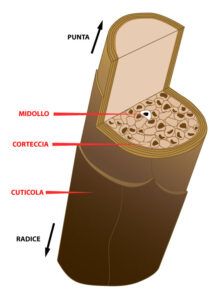
- The cuticle: is the outermost layer of the hair and is made up of horny cells, transparent, non-pigmented, flattened and arranged like the tiles of a roof. The scales remain adherent thanks to a sticky substance that keeps their cohesion stable, safeguarding the internal structures. The cuticle in fact protects the shaft from the environment and its integrity is very important for the health of the hair. Given the position in which it is located, it is the first to be damaged.
- The cortex: is the intermediate part of the hair, made up of flattened dead cells (cheatinized cells) arranged vertically and in parallel rows. It makes up the majority of the hair and determines its shape and texture. It is rich in melanin (colored pigment). The bark helps give mechanical properties and resistance to the hair.
- The medulla: is the innermost part of the hair, formed by cells larger than the other layers, generally separated from each other by air spaces (the retained air has a protective function against cold) which in some cases may affect the color shade. The marrow may also be present in a discontinuous way or even be absent.
Hair plays the important role of thermoregulation and protection of the scalp, so that, in addition to the undeniable aesthetic appearance, take care of it, preventing its problems, It is essential for our own health.
After having examined the structure of the hair, let's try to understand a little better the sun rays, in particular ultraviolet rays, which are particularly intense in the summer period and understand how they can cause serious damage to the scalp and hair.
ultraviolet rays
Ultraviolet rays are distinguished, depending on their wavelength, in UVA, UVB and UVC. The latter are filtered by ozone and never reach our planet.
UVA rays represent 95% of the UV rays and their irradiation is constant throughout the day and year; UVB rays are more present between April and October and their intensity varies depending on the weather, of the season, time and pollution rate.
The damage caused by UV rays is determined by the fact that they stimulate the production of free radicals, i.e. unstable and highly reactive molecules which, when in excess, can damage the cells of our body, such as the proteins and amino acids present in the hair. In particular, UVA is responsible for the loss of color as it induces photo-oxidation reactions of the melanin pigments, lightening and yellowing both natural and colored hair. Melanin, in addition to giving color to the hair, performs a protective function which is significantly reduced when the phenomenon of photo-oxidation alters its composition.
Microscopic studies have also shown that UVB rays cause the rupture of disulfide bridges between the keratin fibres in the bark, which determine the mechanical strength of the stem, Thus making the hair weakened and subject to rupture at the minimum trauma.
EFFECTS ON SCALP AND HAIR
Poorly protected by a photo-oxidized melanin and weakened by the alteration of the integrity of the fibrous proteins of the cortex, the hair is discolored, dry, brittle and rough to the touch, giving the hair a dull and ruined appearance.
Even the scalp is not free from consequences of excessive exposure to sun rays. In fact, it can be subject to dehydration or even burns which can damage the follicles and compromise the health of the hair shaft. Even without causing burns, however, the intense action of the sun's rays can alter the activity of the microcirculation, which is fundamental for the nutritional supply to the hair matrix and its consequent growth and act on particular proteins, le desmogleine, which have the task to retain the hair inside the follicle and whose degradation anticipates hair loss. It is therefore no coincidence that, after a few weeks, many are afflicted by abundant fall.
If we then also add the stress caused by salt water, sand, possible chlorine which amplify the already aggressive action of the sun, we understand that it becomes essential to show up at the summer appointment with hair in good shape which we will try to maintain, protecting it with products specific based on natural principles very similar to their structure, in order to provide resistance and the ability to prevent and possibly remedy the damage of summer atmospheric agents.
IKS TRICOLOGICA LINE FOR THE CARE AND PROTECTION OF SKIN AND HAIR
The IKS tricologica line, based on active ingredients of plant origin, offers its products RESTRUCTURING, Good allies all year round for the maintenance of health of scalp and hair, but particularly suitable for the summer season.
REPAIR CREAM RC
It is a regenerating and nourishing cream, with a strong restructuring and hydrating action. The presence of Avocado Oil, rich in vitamins A, E and B, gives body and shine to the hair, protecting it from external aggressions such as wind, cold and sunlight. Aloe Barbadensis Extract, with its anti-inflammatory and refreshing effect, hydrates and soothes dry and dehydrated scalp. Gingko Glycolic Extract Biloba, with a high content of flavonoids, acts on the hair as a protective agent against oxidative phenomena, blocking the formation of free radicals and intervenes on the permeability of the capillaries, reactivating the peripheral circulation. Hydrolyzed soy and quaternized wheat proteins provide great nourishment and hydration to skin and hair.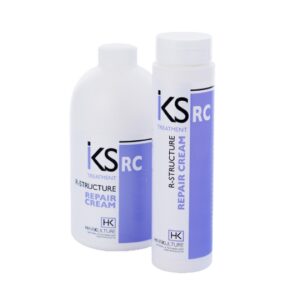
Used after the specific shampoo IKS, has a conditioning and restructuring effect on scalp and lengths, especially if subjected to stress by chemical or environmental agents.
KERATINE HK
It is a complex of proteins, amino acids and keratin oils of plant origin that act directly on the damaged areas of the hair, regenerating its structure and making it shiny and resistant. The presence of wheat and rice proteins, rich in essential amino acids useful for the production of keratin and collagen, allows an important repairing, hydrating and nourishing action while the extract ofThe Verde, rich in polyphenols, caffeine and vitamins B1, B2, C effectively counteracts free radicals and stimulates microcirculation, improving the supply of nutrients to the hair bulbs.
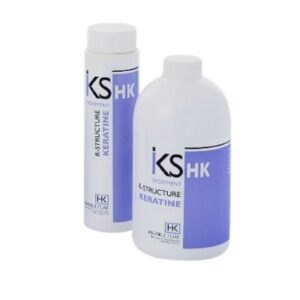
Applied directly on the hair before the beach, protects from the sun’s rays and from bathing in salt or freshwater. Washed with the specific shampoo IKS, leaves hair soft and silky. It can be used in synergy with Repair Cream for a deep restructuring of the lengths and hydration of the scalp.
MINERAL ACID MA
Normalizes the balance of pH and brings the right amount of mineral salts (zinc and magnesium) to the skin and hair. Thanks to the chamomile extract, it has an important anti-inflammatory and refreshing function and effectively combats itching. Thered vine and blueberry glycolic extract, rich in flavonoids, antioxidants and anti-free radicals, regenerate and tone the skin, promoting an increase in capillary resistance. The hydrolysed proteins of rice and wheat perform important restructuring, hydrating, nourishing and antistatic actions.

Used before drying, it relieves skin irritated by sun and sweat, restoring the balance of lost mineral salts and returning the pH to its normal values and moisturizes the lengths that become soft and without electricity. It can also be used on dry skin in case of itching or burning.
HAIR COLORS AUTUMN WINTER 2024
l colori per capelli per l’autunno inverno 2024 maggiormente di tendenza, saranno rappresentati da tonalità naturali e calde, che andranno dai biondi scuri caramello, ai castani nocciola, al rosso che sarà il vero e proprio colore dominante anche per tutto l’anno prossimo.
Ma se il 2023 è stato il trionfo del rosso magenta, con le tonalità tendenti al violaceo a dare drammaticità e intensità alla chioma, per il 2024 avremo teste colorate di “rame copper” un biondo-rosso dorato, dalle sfumature mandarino e dall’effetto dolce e sbarazzino.
Il mood per tutto l’anno prossimo sarà pertanto quello di colori caldi e avvolgenti, talvolta miscelati con tonalità più cenere a creare un mélange cremoso, come il biondo sabbia mixato all’oro e alla vaniglia per un risultato di grande raffinatezza, oppure il più morbido, sontuoso e illuminante biondo dorato, facile da adattare a diversi incarnati.
Anche il castano lo ritroviamo riscaldato da sfumature ramate oppure illuminato da giochi di colore ambra e caramello per un effetto tridimensionale, di grande attualità, che rende otticamente più corposa la chioma.
I capelli neri o castani scurissimi saranno addolciti da delicate schiariture a creare un morbido “cioccolato fondente”.
Non mancheranno proposte di teste dai colori rubati alla natura, come il biondo glicine e il castano fragola.
Da pochi giorni conosciamo il colore pantone per l’anno 2024 e c’è da scommetterci che molti hair stylist proporranno la loro versione di PEACH-FUZZ, per rivestire la chioma di un luminosissimo biondo dalle sfumature rosa/arancio a riprodurre le tenere tonalità della pesca.
In generale possiamo però affermare che la ricerca di colori choc o troppo artefatti, sembra superata, per accostarsi sempre più a tonalità molto vicine a quelle naturali o comunque personalizzate e calibrate in base alla tecnica dell’armocromia, nel concetto della valorizzazione della bellezza unica che ognuno possiede.
D’altra parte se le scelte stilistiche delle star determinano delle tendenze, in tante crediamo, con nostra grande soddisfazione visto che da sempre ci distinguiamo per proposte volte a rispettare la salute e la naturalezza del capello, vorranno imitare Ilary Blasy che, abbandonato un artificioso biondo platino, ha optato per un ritorno al passato, avvolgendo i suoi capelli in un caldo castano tendente al nocciola-miele o come la cantante Emma Marrone che, lasciate le schiariture che l’hanno accompagnata per più di vent’anni, ha optato per un luminosissimo castano, reso più accattivante dall’effetto glossato e dalle innumerevoli sfumature.
La nostra colorazione permanente in gel KOLOURGEL, dalle tonalità calde, avvolgenti e pastose, si presta particolarmente per assecondare le tendenze più attuali, grazie alle sue nuances ben lontane dall’effetto “vernice” e con sfumature molto vicine a quelle naturali.
La sua formulazione non aggressiva, priva di nichel e di ammoniaca, è arricchita con principi attivi di estrazione vegetale che nutrono e proteggono il capello, contrastando in maniera efficace l’azione invasiva dei pigmenti colorati.
Le protezioni presenti nella sua formulazione minimizzano le conseguenti negative della pratica della colorazione, arrivando addirittura a migliorare la qualità del capello che viene reso più luminoso, morbido ed elastico.
In modo particolare segnaliamo:
- Olio di cocco: molto nutriente, riduce in modo significativo la disidratazione della pelle e, grazie alla sua azione lenitiva, calma gli arrossamenti e il bruciore.
- Olio di germe di grano: vero e proprio concentrato di vitamina E, è antiossidante e nutre in profondità la cute.
- Olio di pula di riso: ha un effetto emolliente, idratante e levigante.
- Estratto lipolico di tiglio: idrata e rende elastica la pelle; ammorbidisce e protegge i capelli creando un rivestimento intorno alle cuticole, che limita la perdita di acqua e di lipidi, mantenendone così intatto il turgore.
Il filtro solare contenuto nella sua formulazione, essendo un filtro fisico, non assorbe le radiazioni come i comuni filtri chimici, ma le respinge, facendo sì che la colorazione non sbiadisca.
KOLOURGEL, utilizzato in sinergia con il proprio Attivatore KCG OXID, formulato specificatamente per consentirgli di esplicare al meglio le proprie performance, è una colorazione moderna che tiene conto della salute di cute e capelli, ma contemporaneamente consente al professionista di esaltare al massimo il proprio bagaglio tecnico e artistico, per lavori in sintonia con le tendenze del momento e i gusti della propria clientela.
Per ottenere lavori tecnici ancora più di pregio in cui aggiungere graffiature per illuminare o scaldare le colorazioni di base, proponiamo il nostro decolorante FORCE BLU DECO’, senza ammoniaca, in grado di schiarire senza arrecare gravi danni a cute e capelli. Le protezioni vegetali in esso contenute (proteine del mais) dal forte potere idratante, emolliente e lenitivo, limitano infatti fortemente le conseguenze negative della decolorazione
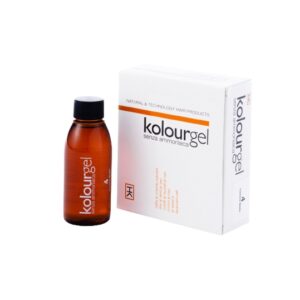


Il settore tecnico-artistico di H.K. HAIR KULTURE ha creato le proprie interpretazioni delle tendenze colore dell’inverno 2024, dando preziosi consigli su come realizzarle.
Il “nostro” rame copper dalle tonalità mandarino, lo si ottiene miscelando 40 g di KOLOURGEL 7,4 con 20 grammi di valorizzatore di schiaritura 00 e KCG OXID 30 volumi.

L’ Ossigeno a 30 volumi, oltre a sciogliere con grande efficacia i pigmenti melaninici naturali, attiva al meglio le tonalità di Kolourgel, per una chioma luminosa e magnificamente colorata.
Anche se l’aggressività dell’acqua ossigenata è nota, le protezioni presenti sia in KCG OXID che all’interno dello stesso Kolourgel, consentono infatti di utilizzare volumi alti per lavori tecnici ottimali, senza che il capello ne abbia a risentire.
Il cioccolato fondente lo otteniamo con KOLOURGEL 1 con graffiature effettuate con FORCE BLU DECO, tonalizzate a discrezione.

Il castano chiaro dalle tonalità fragola nella versione H.K. HAIR KULTURE è dato da 25 g di KOLOURGEL 5,38 miscelato a 25 g di 5,66 con KCG OXID 20 volumi.

La versione più scura del castano fragola la si ottiene con 30 g di KOLOURGEL 4,3 miscelato a 15 g di 4,66 con KCG OXID 20 volumi.
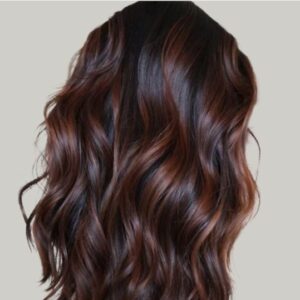
Il nostro biondo miele, dalle calde graffiature dorate, lo si ottiene partendo da un colore di base formato da 20 g di KOLOURGEL 7,3 + 20 g di 7,35 miscelato con KCG OXID 20 volumi. Le fasce dorate si realizzano con FORCE BLU DECO,’ per essere poi tonalizzate con KOLOURGEL 9,33 più KCG OXID 20 volumi. Per concludere, al lavaggio, bagno di luce con un mix di 10 g di KOLOURGEL valorizzatore di schiaritura 0,00, 10 g di shampoo e 10 grammi di KCG OXID 10 volumi per un effetto di straordinaria luminosità.

Chiudiamo la nostra carrellata di colori fashion, proponendo la versione H.K. di PEACH-FUZZ, colore pantone dell’anno 2024, che otteniamo miscelando 40 g di KOLOURGEL 9,33 a 10 g di 7,4 e a 10 g di valorizzatore di schiaritura 00 con KCG OXID 30 volumi.

Il nostro settore tecnico è a disposizione per chiarimenti ed ulteriori suggerimenti.
HAIR LIGHTENING: 10 OF THE MAIN TECHNIQUES
FROM THE '80s TO 2023: THE EVOLUTION OF BLEACHING HAIR "KISSED BY THE SUN
The hair lightening that we have seen proposed by the greatest hairstylists over the years, to create striking special effects, have undergone evolutions, but also several revisitations. We’ve got ten of them.
Abandon the traditional highlights that were so popular in the 80s and 90s, with locks of hair bleached in a decisive way in which the gap between the reflection and the base color appeared clear and artificial or the "highlights" with less accentuated but still unnatural lightening, in recent years techniques have multiplied to propose heads with expertly highlighted highlights distributed, for "sunkissed" effects very similar to those produced by a summer holiday.

One of the most well-known techniques, highly requested especially in the summer period, is “Balayage”, carried out free hand and designed to lighten or color the hair in a natural way. less evident on the roots and more marked on lengths and ends. Balayage creates irregular lightening, some broad and some thinner, some distant from the root, others instead attached to the root itself, the final effect of which will be a general lighting of the hair, with points of light concentrated on some locks, just as if they were natural reflections generated by the sun. Balayage can be done on any base and on hair of any length as long as the right shades are identified to give the hair the best contrasts.

Less frequent than Balayage, but still present, is ”Reverse Balayage” it is the opposite of the previous technique, i.e. it starts from the root, creating shades that darken as they reach the tips.

How not to mention then the "Shatush", perhaps a little out of date but still required, where the lightening is carried out by applying the bleach on hair cotted at the root, compactly, from half lengths up to the ends.
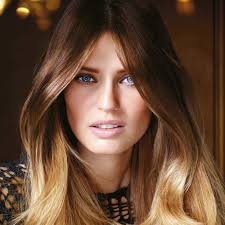
Balayage and Shatush seem to give quite similar final results, but in reality the two techniques are very different from each other. While Shatush is just bleaching, Balayage can involve bleaching but also color, used at the same time to obtain more plays and shades. Both are freehand techniques even if the evolution of Balayage can involve the use of foil. Balayage also does not involve backcombing, a classic characteristic of Shatush which is particularly invasive for those with fragile or already treated hair, for whom, therefore, Balayage is more suitable.
For the summer, "Shadow roots" are in great demand, a play of shades that leaves the roots darker, as if to create a shadow (hence their name) limiting lightening to lengths only, shaded lighter, to reproduce an extremely natural effect, like hair lightened by the sun. The studied "shading" of the roots allows you to camouflage the unsightly effect of regrowth and is therefore particularly suitable for the holiday period.

And speaking of shadows, even the “Sombrè”, also known as “soft ombré” has returned among the trends of summer 2023. It is an ideal technique to give the “sun-kissed” effect ” to hair of any shade, without abandoning the natural color. The "shading" mentioned in its name, in this case means the transition from one nuance to another in an imperceptible way, without evident chromatic contrasts. Only the tips and partly also the lengths are involved in the treatment, while the roots and top remain excluded. Normally two shades of the same color family are mixed, so the shading is extremely delicate, with gentle, natural and barely perceptible lightening.

Another effect of great trend is the "Face Framing", a lightening technique that is limited to the two side locks that frame the face. You can do it on dark and light hair, short and long, but you have to study it carefully, taking into account the shape of the face and the basic shades of the hair and, precisely because it is limited to a precise area, it becomes essential not to make mistakes!

They depopulated in the summer of 2022, but this year they are very popular: are the "Babylights", a mode of vertical discoloration characterized by very thin lightening, which give light and volume even to very fine hair, thanks to the clever play of lights and shadows created by the slight alternation of dark and light tones.
The name "baby" alludes to the size of the riflessature, but also to the effect that wants to recreate, similar to the natural lightening that illuminate the hair of children towards the end of the summer holidays.
The Babylights can be made in the shade you prefer, usually a few shades lighter than the initial one and, depending on your taste or your complexion, can turn on warm colors and honeyed or on cooler tones.
Being a very delicate lightening, they are suitable both for those who just want to have reflections that give an effect of greater brightness, both for those who intend to lighten the hair, but gradually. The technique involves a vertical movement where the strands, divided into very small tufts, are slapped from top to bottom, starting from the height you prefer.
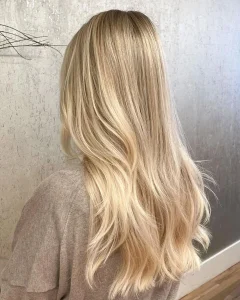
But the most popular trend for summer 2023 comes from social media, where everyone talks about it with more or less positive comments. This is the SCANDINAVIAN HAIRLINE, the "reverse highlights", i.e. the discoloration of only the roots which create a look around the face thin line of lighter hair. It is a Scandinavian technique which involves the application of the bleach directly along the hairline without any foil, also capturing the so-called baby hair, i.e. the very short and unruly hair present in the area of the forehead and temples.
The effect obtained is to create around the face a kind of clear halo, which gives an angelic appearance, similar to that of a Nordic goddess. The scandinavian hairline is usually carried out on already blond hair, to strengthen the detachment with the face, but it is a technique that is also used for dark hair, limiting itself to lighten the area of the junction of two tones compared to the original color.
Compared to the traditional lightening like the "balayage" that only lightens the lengths without reaching the attachment thus creating a modulated and nuanced effect, this technique is much more homogeneous and clear and the result obtained is definitely brighter.
However, you can not help but find some critical. The technique of "scandinavian hairline" in fact requires that the bleach is applied directly to the skin, without the barrier of the stagnole, thus determining possible skin reactions ranging from redness, itching, burns and, in the case of particularly aggressive products, to real burns.
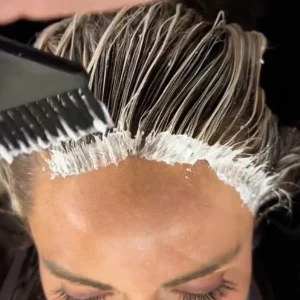

We at H.K.Hair Kulture, for all bleaching techniques, offer FORCE BLU DECO', our bleach without ammonia and aggressive lighteners, which allows you to obtain excellent shades, without compromising the health of your scalp and hair. In particular, for the SCANDINAVIAN HAIRLINE, given the application carried out directly on the skin at the hairline, to avoid irritation and adverse reactions, we recommend to mix FORCE BLU DECO' with the DERMAL PROTECTION protective cream from the IKS trichological line.

Whatever the technique applied, bleaching remains an invasive operation for the hair, especially if carried out with very aggressive products.
It is therefore essential to assess their condition before subjecting them to certain treatments, just as it is absolutely necessary to reserve special care and attention to the bleached lengths, which must be washed, hydrated and nourished with appropriate products, aimed at restoring their natural balance.
The IKS trichological line of solutions according to nature, offers specific shampoos for destructured lengths, free of aggressive and restructuring surfactants, based on vegetable proteins and other natural extracts which, used regularly, help the hair regain its original structure, helping it recover shine, volume and softness.
To then avoid returning from vacation with hair from the disastrous “straw effect”, it is advisable to scrupulously follow the basic rules for the protection and prevention of damage caused by the aggressive action of the sun's rays and salt on already weakened hair, it is decidedly amplified.
It is also advisable, periodically, to be checked with the appropriate computerized microcamera which detects even the slightest imperfections, from your H.K. hairdresser, a specialist in hair health and beauty, and undergo the professional Reconstruction treatment, very valid both for correcting already established damage and as a form of prevention .
BLEACHING: ALL YOU NEED TO KNOW
Everything you need to know about bleaching for a conscious choice.
"Bleaching", i.e. the technique used for the artificial lightening of hair to obtain reflections similar to those naturally produced by the sun or simply to make it lighter, is a system that allows the chemical lightening of the same, through an action implemented on melanin, the set of pigments found inside the fibrous layer of the capillary cortex, which determine its color and which are responsible for protecting against oxidative damage, absorbing part of the solar radiation.
Hair bleaching products always have a "whitening" action on natural pigments. In ancient times, a natural preparation was used consisting of an infusion of Roman camomile or German chamomile , then from 1860, year in which the perfumer Thielley and the hairdresser Leon Hugo presented at a world exhibition in Paris "the water that flows from the golden fountain of youth", a 3% solution of hydrogen peroxide which quickly lightened hair, hydrogen peroxide became the main component of all oxygenated hair preparations.
The hydrogen peroxide contained in the bleach penetrates the hair shaft and oxidizes the pigments, decreasing the melanin concentration to the point of eliminating the natural color tones. This action is strengthened by mixing the bleach with additional hydrogen peroxide, the concentration of which is based on the result you want to obtain and the characteristics of the treated hair. Bleaching occurs in several stages and the color of the hair gradually changes, until reaching the desired shade.
To avoid unpleasant inconveniences, therefore, it is also necessary to carefully evaluate the shutter speed, keeping the lightening monitored, until the desired result and avoiding too long shutter speeds that could lead to serious damage to the hair.
Hydrogen peroxide in fact, opening the cuticle to get to the cortex in which melanin is found, has a particularly aggressive action, causing the hair to lose elasticity, resistance and shine. Depleted of melanin, the natural protection against solar radiation, the hair also becomes more vulnerable, and this vulnerability is greater the higher the lightening.

It is therefore indicated to lighten medium or brown blond hair from one up to four tones (degree of discoloration), while getting to blond hair black color, is an operation that should never be implemented, as the concentration of oxidant necessary to obtain a good result is so high that it inevitably causes serious damage to the hair.
Normally the main components of bleaches are:
- Hydrogen peroxide (or hydrogen peroxide) - bleaching, oxidizing.
- Oxygenation enhancers - are mostly persolfati which strengthen the lightening action of hydrogen peroxide.
- Alkalizing - increases the oxidizing strength of hydrogen peroxide. The most commonly used alkaline is em>ammonia.
- Surfactants - have the function of improving the wettability of the hair and ensuring a uniform dispersion of the bleaching product.
- Protective agents - are intended to limit the damage caused by the bleaching process, penetrating into the damaged cuticle.
For current special effects and in line with the main trends, but without betraying its philosophy that there can be no beauty without health, H.K. Hair Kulture proposes Force Blue Deco' Ammonia Free, its "sweet" bleachwithout ammonia for non-aggressive bleaching.
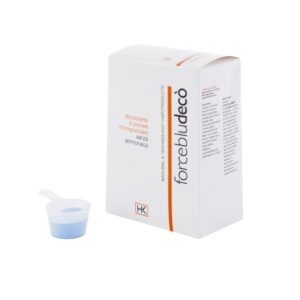
Let’s go in this regard to analyze what are the main components (written in progressive order of quantity present in the formulation) and discover how a bleach without ammonia is able to have equally clearing force:
- Potassium persulphate - Oxidizing agent (green dot in the biodizionario - vegan
- Sodium persulphate - Oxidizing agent (orange - vegan)
- Hydrated silica or acid silicilic - Mild abrasive (green dot - vegan)
- Sodium stearate - Surfactant - cleaning agent (green stamp - vegan)
- Guar hydroxypropyltrimonium chloride – conditioning agent (green sticker – vegan). It is a derivative of natural Guar gum (essentially it is quaternized Guar gum - Latin name Cyamopsis Tetragonoloba). It is an excellent detangler for hair, with stabilizing and emollient properties which allow it to mitigate hair loss. the aggressive effect of surfactants. It is a valid conditioning agent because, being cationic (therefore positively charged), it acts by neutralizing the negative charges present on the hair, thus carrying out an antistatic action. Its film-forming capacity makes it hydrating and protective. Its affinity with keratin means that, in addition to making the hair uniform and easy to comb, it gives a silky effect not only on the lengths, but also on the skin.
- Kaolin - clay used to soothe sensitive skin - whitening ( green - vegan).
- Hydrolysed silk proteins - antistatic - humectant - (green label - animal). They derive from pure silk fibroin and contain free amino acids and peptides which form an excellent combination that guarantees excellent sensorial and film-forming properties. Thanks to their ability to retain water, they are able to form a plastic and protective film, giving the skin and hair softness and smoothness. In combination with surfactants, they attenuate their irritating power, also performing a important antistatic action.
- Corn proteins -humectant - repairing agent - emollient (green stamp - vegan). Vegetable proteins with repairing and emollient properties. They help to maintain the degree of moisture of the skin, have softening and smoothing power. They leave hair manageable, elastic, soft and shiny and help to mitigate the irritant power of surfactants.
As can be deduced from the analysis of the main components of Force Blu Decò, our bleach does not contain HYDROGEN PEROXIDE or AMMONIA, limiting the bleaching action with simple persulphates (associated with hydrogen peroxide to be mixed according to indicated doses) of which the main one, however, that of potassium, is recognized as not excessively invasive (biodictionary green dot), in combination with the other whitening agents. In this way the discoloration takes place in a progressive and non-explosive manner as happens in more aggressive bleaches, resulting in much less damage to the scalp and hair.
The presence of Quaternized Guar Gum and Silk and Corn Proteins mitigates the irritating effect of the surfactant, providing hydration and nourishment to the skin and lengths and making the hair detangled, shiny and vital. Hair ruined by overly aggressive treatments is not only counterproductive for the health of the hair, but also affects the final result of the technical work, as highly stressed hair diminishes the beauty of special effects, even if implemented with skill and professionalism. Force Blue Deco' Ammonia Free is therefore the right compromise between aesthetic pleasantness and the well-being of the scalp and lengths.
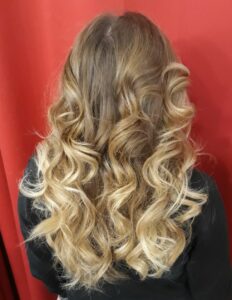
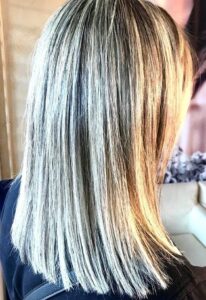

However, it should not be forgotten that even the least invasive bleach subjects the skin and lengths to stress, making the latter more fragile and vulnerable. Hair subjected to bleaching must therefore be helped with cleansing, conditioning and restructuring products that respect its structure and that are able to fully restore those components that inevitably deteriorate or are lost as a consequence of the treatment.
THE MAIN HAIR SHAFT ABNORMALITIES
Possono essere diverse le anomalie che riguardano il fusto dei capelli, ossia la parte visibile che fuoriesce dall’ostio follicolare, costituita prevalentemente da cheratina, nonché da acqua, grassi e sali minerali che, nelle giuste quantità, ne garantiscono la salute e la bellezza.
Esistono infatti circostanze, dalle predisposizioni ereditarie ai fattori di natura fisico – chimica, ambientale che possono compromettere questo delicato equilibrio, determinando situazioni anomale che, se non riconosciute e affrontate per tempo, possono causare danni a volte irreversibili.
In base a specifiche caratteristiche, se ne possono distinguere varie tipologie:
- Irregolarità del fusto: Capelli affusolati e fenomeno di Pohl-Pinkus, Peli a baionetta, Moniletrix, Pili annulati, Pili bifurcati, Pili multigemini, Pili canaliculi o Capelli impettinabili.
- Rottura del fusto: Tricoclasia, Tricoptilosi, Tricoschisi, Tricoressi nodosa, Fratture fusiformi.
- Arricciamenti del fusto: Capelli lanosi, Pili torti, Pili pseudotorti, Triconodosi.
IRREGOLARITA’ DEL FUSTO
Capelli affusolati
Sono caratterizzati da restringimenti affusolati lungo il fusto, dovuti ad un rallentamento temporaneo e ripetuto dell’attività riproduttiva delle cellule della matrice. Si tratta di un’anomalia acquisita, molto spesso collegata all’assunzione di farmaci, malattie infettive febbrili, ulcera peptica, traumi ripetuti da trazione (tricotillomania). Una variante dei Capelli affusolati è il fenomeno di Pohl-Pinkus dove il restringimento è solo nella parte più vicina alla radice del capello ed è spesso da ricondursi ad interventi chirurgici, traumi, emorragie, insorgenza di malattie sistemiche ecc.

Peli a baionetta
I capelli presentano un fusto affilato con un ingrossamento iperpigmentato della corteccia prima dell’assottigliamento. Sono tipici di chi soffre di ittiosi, ma si possono riscontrare anche nella dermatite seborroica e in chi è sottoposto a terapie antitumorali.
![]()
Moniletrix
Il fusto ha complessivamente un aspetto che lo fa assomigliare ad una collana (da cui il termine moniletrix) poiché presenta a distanza regolare l’uno dall’altro, rigonfiamenti di circa 1 mm, detti “nodi”. Questi sono spesso privi di cuticola e separati da restringimenti affusolati detti “internodi”, che presentano scanalature longitudinali in cui sono presenti le cellule cuticolari, ma alterate e dove più frequentemente si verificano le fratture (clasie). Il capello si spezza con grande facilità ad 1-2 cm dalla cute dando origine ad una pseudo-alopecia diffusa che interessa soprattutto le zone di maggior sfregamento come la nuca. Il cuoio capelluto presenta tipiche papule follicolari cheratosiche. Il Moniletrix si evidenzia fin dai primi mesi di vita e tende a migliorare con l’età senza tuttavia regredire completamente. Si tratta di un’anomalia di origine ereditaria e può colpire anche i peli di tutti i distretti cutanei.

Pili annulati
In questo tipo di capelli il fusto, la cui cuticola si presenta strutturata in maniera regolare e con lievi scanalature, è caratterizzato da bande alternate chiare e scure. Ciò è dovuto a microbolle di aria che si trovano tra la corticale e le cellule della corteccia. Queste aree risultano infatti chiare se osservate a luce incidente e diventano invece scure se la luce è posta dietro al capello (microscopio, ripiano illuminato) dando al capello un caratteristico aspetto “zebrato”. Si tratta di un difetto su base genetica, determinato da una irregolare attività delle cellule della matrice del capello che cresce più lentamente del normale e può risultare più fragile, anche se, nel complesso risulta esteticamente gradevole in quanto dà l’effetto di una capigliatura “lucente”.

Pili bifurcati
Dal follicolo fuoriesce un pelo che si biforca dando origine a due peli distinti ognuno con la propria cuticola. Si differenzia dalla tricoptilosi in quanto, in quest’ultima anomalia, la cuticola è assente.

Pili multigemini
Da uno stesso follicolo possono uscire fino sette/otto peli distinti e completi. Si tratta di un’anomalia di sviluppo del follicolo pilifero, piuttosto rara, dove numerose papille e matrici dotate di guaine epiteliali interne proprie, (mentre la guaina epiteliale esterna rimane unica), producono peli che escono da un solo ostio follicolare. La causa è da attribuire probabilmente a compressioni meccaniche non omogenee fra le varie guaine.

Pili canaliculi
Lo stelo, provvisto di cuticola, si presenta trasversalmente di forma triangolare, dovuta ad una o più scanalature longitudinali. Si tratta di un’alterazione ereditaria che determina capelli biondo-argenteo o giallo-grigiastro che non possono in alcun modo essere pettinati (capelli impettinabili) e che si spezzano facilmente nel tentativo di poterli domare. La probabile causa è da ricercarsi in una irregolare cheratinizzazione della guaina epiteliale interna che diventa precocemente troppo rigida, alterando il capello in crescita. Di solito appare nei primi anni di vita, per poi migliorare nell’adolescenza.
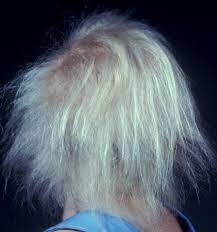
ROTTURA DEL FUSTO
Tricoclasia
Si tratta di una frattura trasversale del fusto che interessa solo la parte centrale ossia corteccia e midollo, mentre la cuticola rimane integra. Non è determinata da malattie o predisposizioni genetiche, ma è per lo più legata a traumi di tipo chimico (colorazioni e decolorazioni). I capelli si spezzano nella parte superiore del follicolo mentre le radici non cadono. Nelle fasi iniziali i capelli non risultano particolarmente fragili, ma continuando gli eventi di tipo traumatico, si può determinare la rottura della cuticola e lo spezzarsi dei capelli sino in prossimità del cuoio capelluto. Quest’anomalia è inoltre caratterizzata dalla comparsa di nodi. Nei casi meno gravi i capelli si spezzano proprio in prossimità di questi nodi. Nei casi più gravi il danno è irreversibile e occorre tagliare i capelli, asportando le parti danneggiate.

Tricoptilosi
Più comunemente conosciuta come “doppie punte”, è una frattura longitudinale del capello, che, dopo una prima fase di perdita della cuticola, finisce letteralmente per sdoppiarsi. Può essere intermedia o terminale e si verifica solo per danni fisico-chimici. Una delle principali cause è il calore (eccessivo uso di phon e piastre), ma anche spazzolature troppo energiche e trattamenti aggressivi come permanenti, colorazioni e decolorazioni, senza il dovuto utilizzo di prodotti idratanti ed emollienti atti a conservare l’integrità della cuticola. Si accentua in estate a causa dell’esposizione ad agenti esterni come raggi solari, sale marino o cloro della piscina che inaridiscono la chioma, rendendo i capelli secchi e soggetti a spezzarsi facilmente. Anche in questo caso, di fronte a fratture longitudinali di parecchi centimetri, l’unica soluzione è il taglio dei capelli.

Tricoschisi
E’ una frattura trasversale del fusto senza rigonfiamenti, dovuta a carenze proteiche e soprattutto di zolfo. I capelli si presentano appiattiti, secchi, irregolarmente conformati e ruvidi.

Tricoressi nodosa
E’ caratterizzata da rigonfiamenti tondeggianti, fragili e facilmente soggetti a frattura. In una prima fase vi sono aree bianche visibili solo al microscopio determinate dalla perdita della cuticola, cui seguono nodi o rigonfiamenti ben evidenti, dovuti all’allentamento della struttura corticale, sino ad arrivare alla rottura vera e propria (che avviene con aspetto tipicamente “sfrangiato”, a pennello). Le cause possono essere di natura ereditaria oppure, la più comune, a seguito di stress fisici e chimici (phon, spazzole, acconciature, permanenti, colorazioni, shampoo frequenti con prodotti aggressivi ecc.). Chi soffre di questa anomalia presenta capelli che, oltre ad essere fragili e facilmente soggetti a rottura, risultano opachi e dalla crescita ridotta o addirittura impossibile.

Fratture fusiformi
Si verificano principalmente nei “capelli affusolati” in concomitanza con i restringimenti. La parte residua del capello presenta il tipico aspetto “a punta di matita”.

ARRICCIAMENTI DEL FUSTO
Capelli lanosi
Capelli crespi come quelli tipici dell’etnia nera possono esserci anche nei caucasici. Questo tipo particolare di capigliatura è dovuto, nella stragrande maggioranza dei casi, ad una malattia ereditaria che può essere già manifesta alla nascita oppure nei primi mesi di vita. I riccioli, con un diametro di 0,5 cm sono molto ravvicinati, difficili da pettinare e risultano particolarmente fragili. In genere la crescita dei capelli è normale, ma la fase anagen può risultare incompleta, con alterazione del ciclo vitale dei capelli che, di conseguenza, non riescono a raggiungere una lunghezza normale. La malattia può essere generalizzata e interessare tutto il cuoio capelluto, oppure circoscritta sotto forma di nevo con capelli lanosi. Esiste inoltre una forma, sempre ereditaria, che ha il suo esordio nell’adolescenza, riguarda prevalentemente i maschi, colpisce le zone occipitale e temporale dove i capelli iniziano a scurirsi e ad arricciarsi, può arrivare a coinvolgere l’intero cuoio capelluto e, a volte, anche regredire. I fusti dei capelli lanosi hanno sezione ovoidale e spessore ridotto, presentano curvature o torsioni con il risultato finale di un notevole arricciamento. Non sono pettinabili, ma nell’età adulta possono spontaneamente diventare meno ricci e fragili

Pili torti
Come si evince dal nome, il fusto non è rettilineo, ma presenta torsioni di 180° su se stesso (di solito da 3 a 5) ad intervalli regolari. In questi tratti la sezione da circolare diventa ellittica e si caratterizza per la sua fragilità. Il capello generalmente si spezza a 4 – 5 cm dallo sbocco del follicolo. La causa prevalente è dovuta ad anomalia ereditaria, mentre molto scarse sono le segnalazioni di pili torti dovuti a traumi acquisiti e ripetuti.

Triconodosi
E’ un’alterazione del fusto dovuta a legature troppo strette e forzate che portano i capelli letteralmente ad annodarsi. E’ tipica dei capelli crespi e si verifica soprattutto nei capelli lanosi o di tipo afro. I capelli risultano molto più fragili in corrispondenza dei nodi in quanto la cuticola risulta disgregata e la corteccia pertanto esposta e vulnerabile. E’ proprio in questi punti che si verificano più facilmente le fratture dovute a traumi di tipo chimico o fisico.
![]()
Sindrome dei capelli impettinabili
Con questo termine viene definita una situazione in cui i capelli non possono essere pettinati e trattamenti energici per riuscire ad ottenere un’acconciatura accettabile, possono generare le prevedibili e inevitabili conseguenze della rottura dei fusti. La sindrome dei capelli impettinabili la si riscontra in presenza di malformazione dei fusti, di solito Pili canaliculi, Capelli lanosi o Pili torti.
COME PREVENIRE LE ANOMALIE DEL FUSTO
Abbiamo elencato solo alcune delle anomalie che possono affliggere il fusto e determinare, nel migliore dei casi, una chioma in disordine. Come abbiamo visto, le cause possono essere congenite, per cui ovviamente non è possibile parlare di prevenzione oppure derivare da comportamenti scorretti. In quest’ultimo caso è invece assolutamente doveroso prendere coscienza delle conseguenze di determinate azioni, valutare se certe scelte di carattere estetico (decolorazioni selvagge, permanenti, piastre utilizzate in maniera sistematica…) siano adeguate per la salute dei propri capelli e prestare la dovuta attenzione alla loro cura, fatta con prodotti adatti, nella routine così come nei trattamenti periodici. Non dobbiamo mai dimenticare che i lavori del parrucchiere eseguiti su capelli disidratati, con fusti gravemente danneggiati, non solo peggiorano sensibilmente la qualità degli stessi, ma comportano anche pessimi risultati dal punto di vista estetico (uno dei più classici…l’effetto paglia) perché, sarete d’accordo con noi, non ci può essere bellezza in capelli privi di salute! Affrontare lavori estetici (colorazioni, decolorazioni ecc.) con capelli in forma, non solo migliorerà sensibilmente la qualità del risultato finale, ma ridurrà decisamente l’impatto invasivo di queste operazioni, senza dimenticare che più che mai, capelli trattati, avranno comunque necessità di cure e attenzioni particolari. Ricordiamoci inoltre che l’estate non è amica dei capelli per cui, affrontiamola con lunghezze in salute, non abbandoniamo mai la nostra sana routine per conservarle tali e adottiamo tutti i provvedimenti del caso per proteggerli dalle insidie cui inevitabilmente andranno incontro.
Anche nel caso di anomalie congenite del fusto dei capelli, è comunque indispensabile avere routine di cura e trattamenti periodici con prodotti specifici che possano apportare la giusta idratazione, emollienza e dare un valido aiuto nella delicata fase della ristrutturazione.
LE SOLUZIONI SECONDO NATURA DELLA LINEA TRICOLOGICA IKS
Per prevenire le anomalie delle lunghezze è opportuno avere sane abitudini che partono dalla consapevolezza delle esigenze dei capelli, dal momento della detersione sino alla piega, senza dimenticare i trattamenti periodici da effettuarsi in relazione a determinati periodi dell’anno o a specifiche necessità.
Considerando la conformazione e la composizione del fusto, è doveroso utilizzare detergenti specifici per le lunghezze, che non ne vadano ad alterare il pH che è leggermente più acido del cuoio capelluto (3,5,) in quanto deve garantire la chiusura delle cuticole, poste a protezione della parte interna del capello. Detergenti troppo aggressivi, alterano la naturale protezione delle lunghezze, determinando l’apertura delle cuticole, con perdita di acqua e di lipidi e conseguente disidratazione, impoverimento e vulnerabilità del fusto.
La linea tricologica IKS, propone i suoi shampoo specifici per le lunghezze, diversificati secondo la tipologia dei capelli e studiati appositamente per detergere con azione volta a riequilibrare il pH fisiologico, grazie al mix di tensioattivi ad estrazione naturale, calibrati per risultare perfettamente compatibili con le loro esigenze. I principi attivi funzionali ad estrazione naturale in essi contenuti, svolgono inoltre effetto condizionante e blandamente ristrutturante, per dare idratazione e corposità. Già quindi con gli Shampoo lunghezze i capelli risultano morbidi e districati.
E’ però indispensabile completare l’azione con specifici prodotti condizionanti e ristrutturanti, in grado di fornire sostanze che possano ricomporre, ove necessario, la naturale struttura del capello e svolgere un’importante azione di prevenzione rispetto a potenziali danni futuri.
I prodotti RISTRUTTURANTI della linea tricologica IKS, a base di oli vegetali, vitamine, Sali minerali, proteine e aminoacidi vegetali, apportano idratazione e nutrimento, ripristinano le naturali barriere difensive della cuticola e provvedono a ricostruire eventuali aree danneggiate della corteccia, facendo risultare così i capelli corposi, morbidi, lucidi, docili al pettine e privi di elettricità….ossia visibilmente sani!
I RISTRUTTURANTI IKS possono essere utilizzati singolarmente o in contemporanea, dopo lo shampoo specifico, in base alle esigenze dei capelli.
Periodicamente, a scopo di prevenzione o per affrontare i danni delle lunghezze dati da fattori fisico-chimici (colorazione, decolorazione, permanenti, uso di piastre, spazzolature energiche..) o dopo l’inverno o le vacanze estive, è opportuno chiedere al proprio parrucchiere il trattamento professionale della RICOSTRUZIONE in cui tutti i prodotti RISTRUTTURANTI IKS vengono utilizzati secondo il metodo I.K.S. per ricostruire i capelli in profondità e rimediare a danni anche gravi dei fusti.
Per concludere vale la pena ricordare che anche i prodotti di finitura per la piega come lacche, schiume, gel, devono avere componenti che contribuiscano a salvaguardare la struttura del capello, dando volume, stabilità e forma, senza danneggiarlo…. esattamente come fanno tutti i FINISH della linea tricologica IKS, a base di estratti naturali e senza siliconi sintetici che creano pesantezza e rivestono le lunghezze di una guaina che, a lungo andare, crea secchezza e determina i presupposti per le doppie punte.
WE PREPARE OUR HAIR FOR THE ARRIVAL OF SPRING
To better prepare our hair for the arrival of spring and get rid of the consequences of the winter months that have certainly left behind waste and toxins, it is good to have a professional check-up at a qualified HK hairdresser.
The use of the micro camera, a microscope capable of increasing visibility by over 200 times, will allow for accurate visualization of the conditions of the scalp and lengths and will allow our hairdresser to precisely evaluate the real conditions of our scalp and our hair. hair and to establish which IKS treatments will be the most suitable for restoring its natural well-being.
Surely before each treatment, deep cleansing through the PROFESSIONAL PEELING must not be missing, which will eliminate residual sebum, dandruff, dead cells and will bring our Ph back to normal physiological conditions. The pH of the altered scalp undermines the effectiveness of the hydrolipidic film, the natural barrier composed of sebum and sweat, responsible for protecting the skin, thus promoting the action of harmful bacterial loads and inflammatory states, with serious damage for our hair. PEELING CREAM, the delicate cream based on functional active ingredients for cleaning the follicular ostium and SKIN PURIFYING, a mix of essential oils with a powerful dermo-purifying and antiseptic action, will guarantee free follicles and reactivated microcirculation and will prepare the scalp to maximum receptivity for subsequent treatments.
The lengths will also have to be checked to understand what damage they may have suffered during the winter period. Sudden changes in temperature, atmospheric agents, chemical and mechanical treatments may have dried out the hair or produced deeper damage, through more or less marked lesions of the cuticle. The H.K. hairdresser, through the use of the micro camera, will be able to evaluate the quality of the lengths and understand if a Professional Reconstruction with the Restructuring products of the IKS line (Keratine, Repair Cream and Mineral Acid) may be sufficient, or if it will not be the case of making more or less decisive cuts!
Our hairdresser will certainly not forget to give us the right advice for adequate MAINTENANCE AT HOME, certainly no less important than salon treatments, as a logical continuity for the resolution of the anomalies found, with a view to normalizing the scalp and hair and preventing their recurrence.
From our hairdresser we will therefore have the appropriate scalp shampoo, the specific one for the lengths, the most suitable restructuring product (Repair Cream or Keratine or both) and the right Finish product for autonomous management of the style (Natural Lac, Natural Mousse, Fluid Cristal or Defining Fluid Curl). If necessary, he can also advise us on the use of Peeling Cream and the skin treatment product (Esarome Dandruff - Sebum - Vitalising) in case of specific anomalies.
Not giving continuity at home would mean canceling the benefits of in-salon treatments as only REGULAR USE GUARANTEES THE FULL EFFECTIVENESS OF THE IKS LINE, whose main function is to keep the symptoms of certain anomalies under control in order to of the use, to the prevention of the same.
Sometimes the more or less drastic cut can be made necessary due to the condition of our hair which, if we have neglected it, can present irreversible lesions. Sometimes it may be that the arrival of the new season, with the days that light up with more vivid and brilliant colors and the air that smells of renewal, invites us to change our image.
Taking care of ourselves, renewing our appearance with a more youthful cut, a change of color or some special effect that lights up our face, can really help improve our state of mind, give us more energy and vitality, infuse us more desire to face the problems with less anxiety that the stressful daily life of modern life certainly does not fail to reserve for us.
VIVA MAGENTA: PANTONE COLOUR FOR THE YEAR 2023
Pantone Color Institute is an American academy that for over 20 years has been providing forecasts on colour trends that will shape the world of fashion and design. Pantone Color of the Year is proclaimed annually and influences product development and purchasing decisions ranging from clothing and accessories, through interior design, to industrial design, product packaging and graphic design. The process of selecting the Pantone Colour of the Year requires careful trend analysis. Every year, the colour experts of the Pantone Color Institute scour the world in search of new colour influences. The entertainment and film industry in production, touring art collections and new artists, fashion and all areas of design, as well as popular travel destinations and new lifestyles, are all factors taken into consideration for the final evaluation. Influences can also come from new technologies, materials, textures and effects that impact colour, social media platforms and even sporting events. In the end, the choice also includes messages of warning or encouragement and reflections on socio-economic conditions and the environment in which we live.
For the experts of the Color Institute, the new PANTONE 2023 colour is 18-1750 Viva Magenta. It is a carmine red shade with violet undertones, classic, strong and at the same time original... "an unconventional colour for an unconventional time"... as Laurie Pressman, Vice President of the Institute, commented. An artificial and natural blend at the same time that ... "highlights our change of perspective, highlights our need to feel more active and instils the strength we need to boldly, positively and fearlessly embrace a new path". Its name dates back to the Second Italian War of Independence and derives from the battle of the Lombard town of Magenta, which became infamous for the 'blood-red' events of that period. Viva Magenta is a joyful and optimistic shade of red, well balanced between warm and cool. It is inspired by cochineal red, one of the oldest and most precious dyes, with strong and brilliant characteristics, rooted in the primordial world and taking us back to the original matter. It is, on the other hand, a colour of extraordinary modernity... bold, with a powerful and pulsating nature, future-oriented, capable of stimulating the intellect and self-expression without qualms and with a fearless and rebellious spirit. Pantone explained that the choice of colour 2023, after the gloomy and uncertain years just gone by, fell on VIVA MAGENTA, precisely because of its intrinsic revolutionary power, boldly projected towards tomorrow. Exciting was also the slogan used to announce the choice, which includes the new term 'Magentaverse' with clear references to the 'Metaverse', the evolution of the Internet that prefigures a set of interconnected virtual and real worlds that we can only enter with our avatars, in the unprecedented design experiment that explores the relationship between new technologies, including 'Artificial Intelligence', and human creativity.
Naturally, the world of Beauty and Hair is also influenced by the presence of this decisive, full and vibrant colour, a perfect blend of blue and red. It takes audacity to wear it and is therefore a perfect match for strong, enterprising personalities who are not afraid to face the challenges of a world that is as complex as ever, but which also offers great opportunities. There are, of course, different shades of magenta, from the darkest, in which the violet hue prevails, to the lighter shades in which red or even pink prevails. Being a colour well balanced between warm and cool tones, it goes well with golden, olive and even very pale complexions... on the other hand, since it represents the expression of courage and experimentation, it is worth daring simply because it is liked and because it expresses the desire to be oneself in an unconventional and unconventional way, without renouncing the class and elegance of an extraordinarily balanced and refined colour.
We at H.K.Hair Kulture also have our VIVA MAGENTA proposals.... in the more classic version of nuance 5.66 of Kolourgel, our permanent colouring gel without ammonia, or in the more decisive variant with violet highlights, given by the mixture of nuances 4.66 and 5.1, or in the lighter, almost pinkish version that comes from the combination of nuance 6.66 with 11.21. There are, of course, many other possibilities, obtained by blending techniques according to the principles of colorimetry, expertly explained by our HK EDUCATION teachers, for hair with up-to-date and vibrant colours, in the most complete respect for skin and hair.
